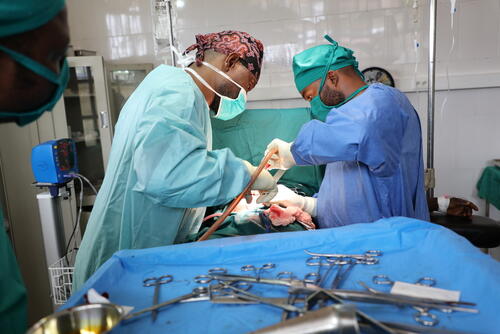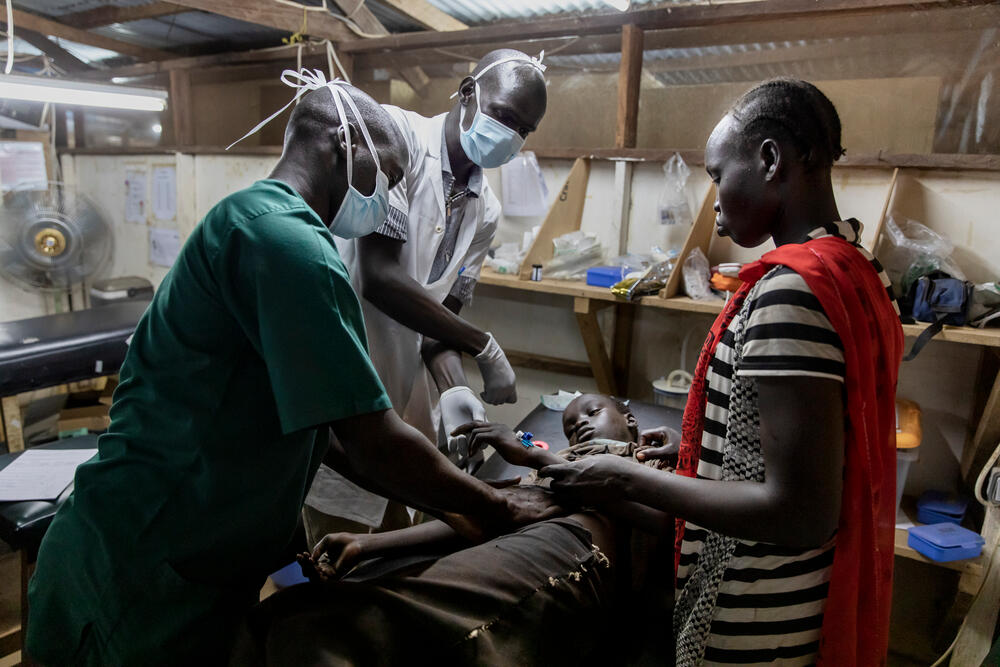Our commitment to reducing our carbon emissions
The climate emergency is a threat to the future of our planet and the health and well-being of people around the world.
The communities Médecins Sans Frontières / Doctors Without Borders (MSF) assists are already experiencing the consequences of climate change, and we know that health and humanitarian crises will increase in scale and severity as the climate crisis accelerates.
Urgent action must be taken now to prevent more human suffering and respond to impacts.
We have pledged to reduce our emissions by at least 50 percent compared to 2019 levels by 2030
MSF's carbon commitment
Recognising our own contribution to the global problem of carbon emissions and human-caused environmental disruption, we have pledged to reduce our emissions by at least 50 percent compared to 2019 levels by 2030.
With this target, we aim to chart a firm trajectory toward decarbonisation, aligning MSF with the goals of the Paris Agreement on climate to limit global warming below two degrees.
The international MSF movement has unanimously agreed to this ambitious target and to report on the progress towards meeting it.
“Human health will be increasingly damaged by the negative consequences of the climate emergency,” says Dr Christos Christou, MSF International President.
“It is not enough to respond to health problems when they arise. We have to do our part to prevent them from happening in the first place.
"Failing to act now would mean breaking our medical and ethical obligations towards patients and communities.”
Assessments to establish MSF’s 2019 carbon footprint are underway, but there is already a certainty that our organisation will have to continue to adapt and address issues related to the transport of people, supply, construction, energy and waste management.

Get closer to the Frontline
Get the latest news, stories and updates, straight to your inbox.
The climate crisis hits the most vulnerable the hardest
In many MSF project locations, our medical humanitarian teams are responding to situations that are linked to the changing environment.
This includes increasing numbers of people with infectious diseases such as malaria, dengue fever and cholera, as a result of changing rainfall and temperature patterns.
There are also increasing cases of zoonotic diseases (transmitted from animals to humans) due to rising pressure on the environment; and more frequent extreme weather events, such as cyclones, hurricanes and droughts, which can contribute to malnutrition.
In many places where we work today, our teams see people with multiple health needs resulting from frequent epidemics, food insecurity, conflict and displacement, which are all exacerbated by the climate emergency.
Urgency to act
Building on MSF’s 2020 Environmental Pact, we recognise the need to make real and immediate changes in order to help curb the health impacts of climate change.
This is why we are pledging to drastically reduce our emissions in this decade and why we are joining the nearly 200 humanitarian organisations that have signed the Climate and Environment Charter for Humanitarian Organizations.
As an emergency medical organisation, our priority will always be to provide rapid assistance to people in some of the world’s most remote places, but we must find a way to do this while minimising our environmental footprint.
Within MSF, across the humanitarian sector and in the whole of society, we must change how we operate. This will not be easy, but will only become more necessary as climate change increasingly exacerbates humanitarian emergencies.
“Decarbonising the way we implement and support our medical emergency projects in over 70 countries is not a small task. But we are determined to get there and we are working from all angles to find solutions,” says Christou.
“If we want to spare future generations from more suffering and disasters, we all need to take responsibility. The climate crisis is ultimately a health crisis and curbing emissions is now part of our humanitarian action.”
This page was last updated on 29 March 2022
